On View
Street Artist Shepard Fairey Celebrates 21 Years as an Art Gallerist—Who Knew?
Subliminal Projects is a gallery for artists who don't fit the blue-chip mold.
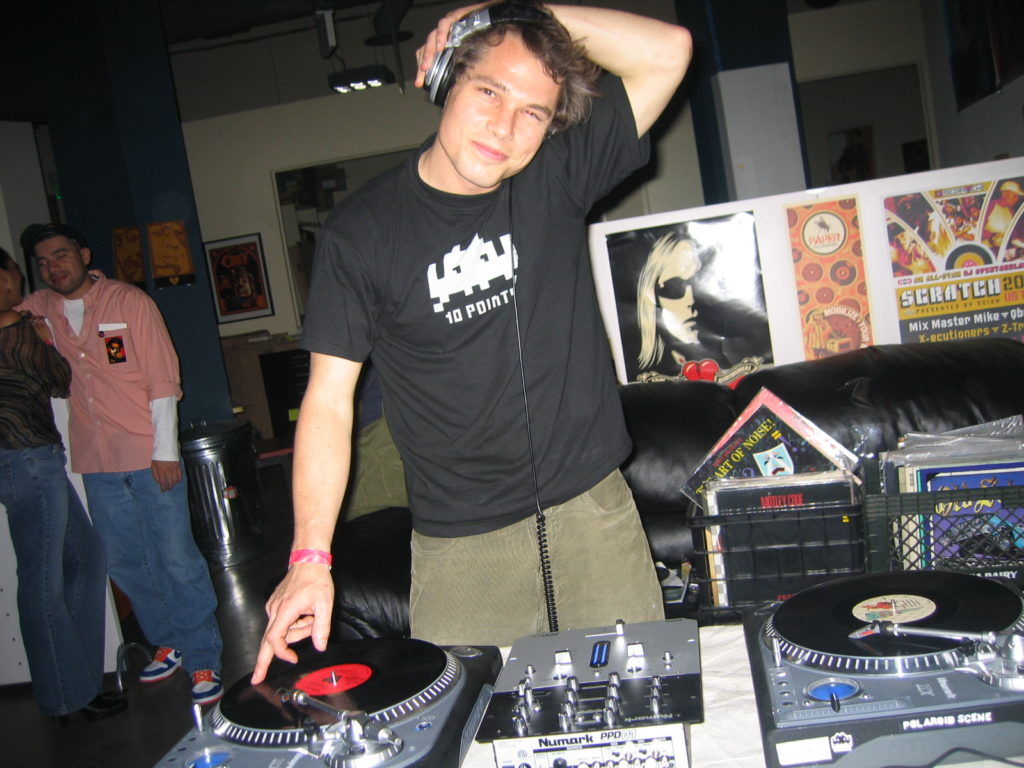
Subliminal Projects is a gallery for artists who don't fit the blue-chip mold.

Sarah Cascone

Shepard Fairey is having a big year. In January, his “We the People” poster series became some of the most ubiquitous imagery surrounding the international protest marches against the inauguration of President Donald Trump, perhaps equaling the success of his iconic 2008 Barack Obama “Hope” poster.
Soon afterwards in February, the artist received the Tony Goldman Lifetime Artistic Achievement Award at Art Wynwood in Miami. Now Fairey is celebrating 21 years of operation at Subliminal Projects, the Los Angeles gallery he opened in 1995. It’s an achievement that’s less about Fairey and more about the scores of artists to whom he’s given a platform over the years, especially the street and skate artists who might not otherwise get such exposure for their work.

A poster from the We the People series by Shepard Fairey. Image courtesy of Obey Giant.
“Subliminal initially started as a concept for a skateboard brand,” Fairey told artnet News. “We were always talking about how skateboarding was a very creative culture, but the artists kind of sat in the background. Athletes were the ones who got all the attention, but everything was really driven by graphics on skateboards, on t-shirts, on stickers…. We decided to do a brand that was about putting the artist out front.”
The brand didn’t last, but Fairey’s desire to erode the barriers between graphic art, street art, skateboard art, and fine art carried over to his gallery of the same name, intended as an homage to the original Subliminal concept and an extension of its philosophy. “It was about celebrating things that were, in our mind, really strong art but might not be really finding favor in the gallery space yet,” he explained.
“Good art comes in a lot of different forms,” said Fairey. “Just being open to the idea of art outside of the elite paradigm of the fine art world was important to our mission.”
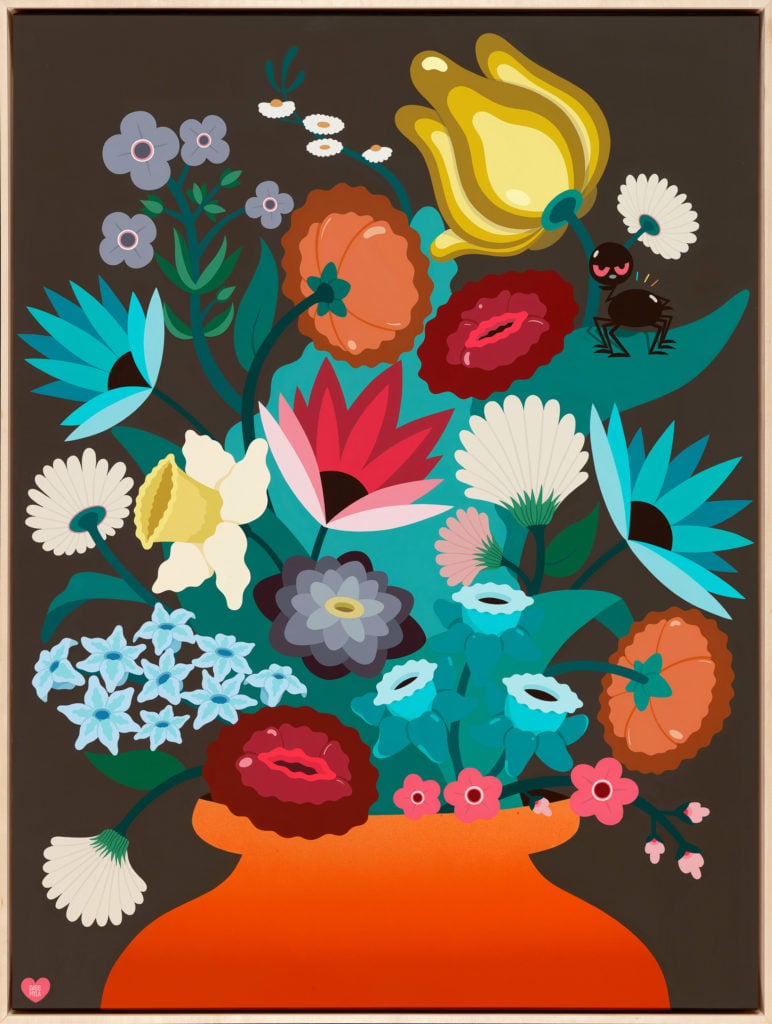
DabsMyla, These Are the Days, 2016. Image courtesy of Subliminal Projects.
At the time, there were very few places in the Los Angeles art world that catered to the kind of urban contemporary, non-blue-chip art that is Subliminal Projects’s bread and butter. “I was seeing an abundance of artists who were doing great work with no places to show,” Fairey recalled. “I said, let’s make a place where our crew can show.”
Over the past two decade, that’s certainly changed. “The art world in LA has really blown up, so there’s a lot of galleries that show work from worlds that we were initially one of the first to champion,” said Fairey. “There’s a lot of competition now.”
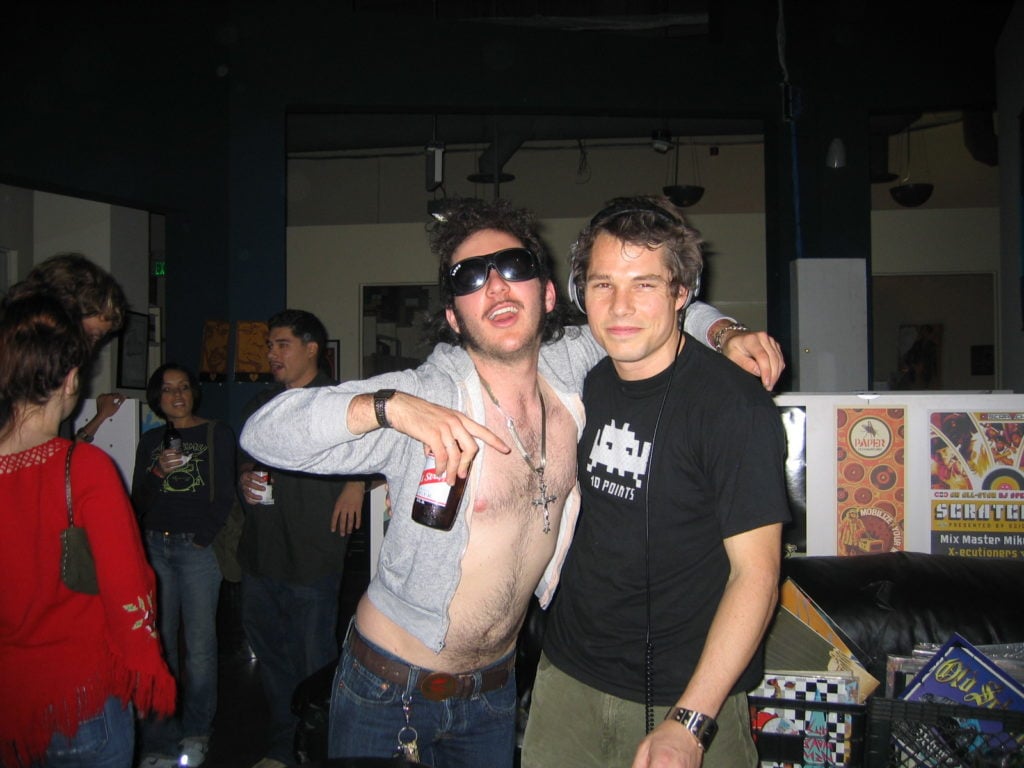
Mark Hunter AKA the Cobrasnake (left) and Shepard Fairey (right) at an opening at Subliminal, ca. 2005. Image courtesy of Mark Hunter AKA the Cobrasnake.
The current exhibition, titled “Twenty-One,” is both an overview of the gallery’s history and a celebration of the artists who have been part of it over the years. The building also houses the Obey Giant design firm, and Fairey’s print shop.
“When we started Subliminal, we understood that the gallery might not make money. If the rest of the business had to absorb the overhead for it, we could live with that,” said Fairey. “It’s something that we want to do not because it’s financially rewarding, but because it’s important to us culturally.”
“Twenty-One” is a huge salon-style show that takes up almost all of the gallery’s available wall space. “We’ve got a lot of artists who we’ve shown who have gone on to do bigger things,” said Fairey. “Maybe they don’t need a gallery like ours anymore, but they still wanted to be part of the show, which is exciting.”
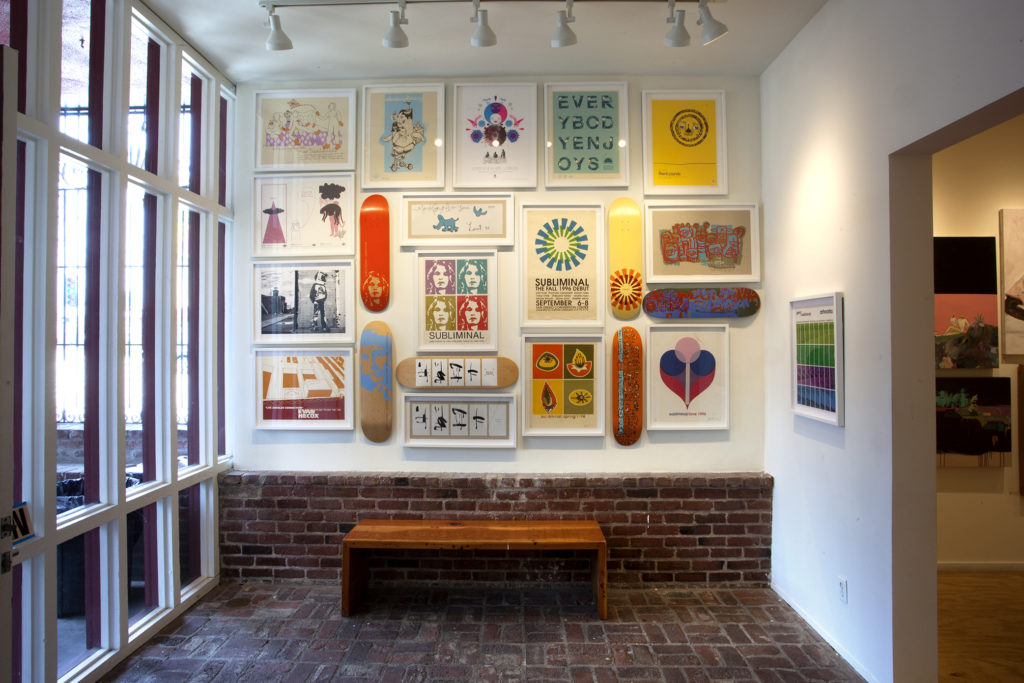
“Twenty-One,” installation view. Image courtesy of Subliminal Projects.
The wide range of work on view, much of which is quite affordable, includes pieces by Aaron Rose, Curtis Kulig, Jeff Ho, POSE, Space Invader, Travis Millard, and many more. The show also includes behind-the-scenes photographs and archival materials of the early days at Subliminal Projects.
“We were able to dig up a lot of stuff from the mid ’90s when we were first formulating the idea for the gallery. None of us knew how to use a computer,” he added. “We found all sorts of ephemera that shows the space’s DIY roots.”
Given Fairey’s undeniable success, he believes that “it’s important to remind people that there was a lot of risk-taking to get where we are.”
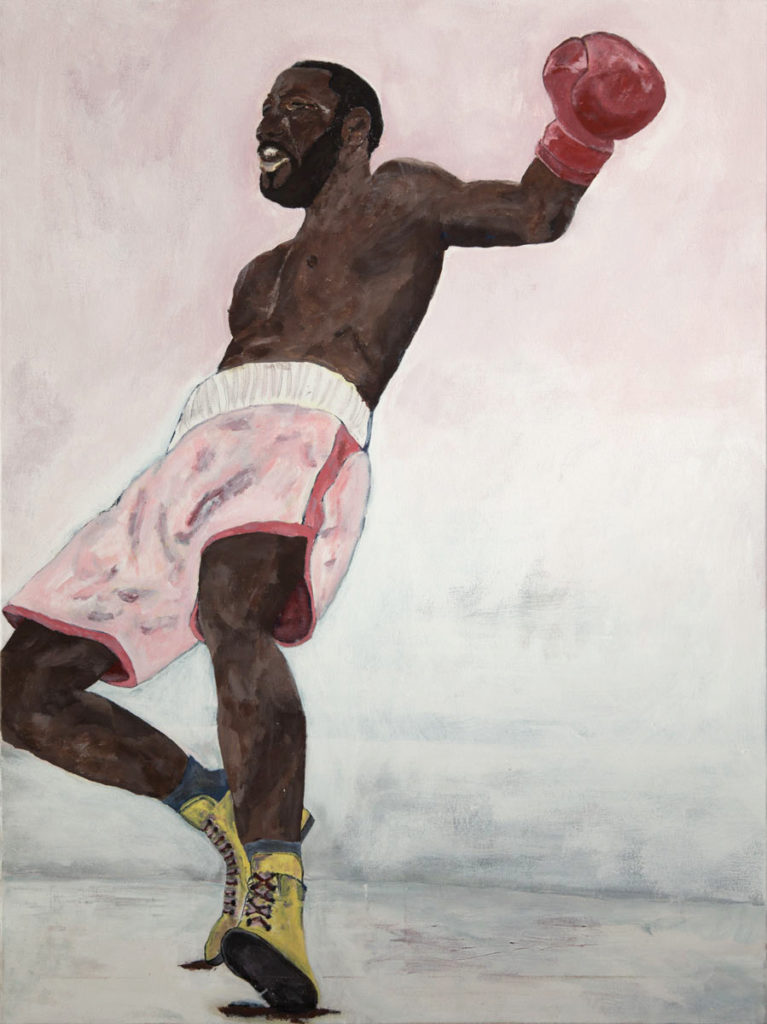
Curtis Kulig, Rumors (2017). Courtesy of Subliminal.
Of course, the gallery has come a long way in the years since. When Jeffrey Deitch was director of LA MOCA, he was a regular at openings, and could be counted on to “bring some sophistos with him,” said Fairey. Subliminal has also shown work by a-list names such as Billy Al Bengston, Ed Ruscha, and Raymond Pettibon. “Those people don’t need our help, but it’s nice to cross-pollinate with the blue-chip crowd.”
There have also been a number of high-profile music performances in the gallery parking lot over the years, featuring Billy Idol, Blondie, members of the Sex Pistols, and LL Cool J, to name a few.
One particularly memorable concert came during a tribute show to the band Bad Brains, featuring band bassist Darryl Jenifer, Moby, and Dave Grohl. “There were kids climbing up on the scaffolding on the building next door to us,” Fairey recalled. “I really thought it was going to fall down!”
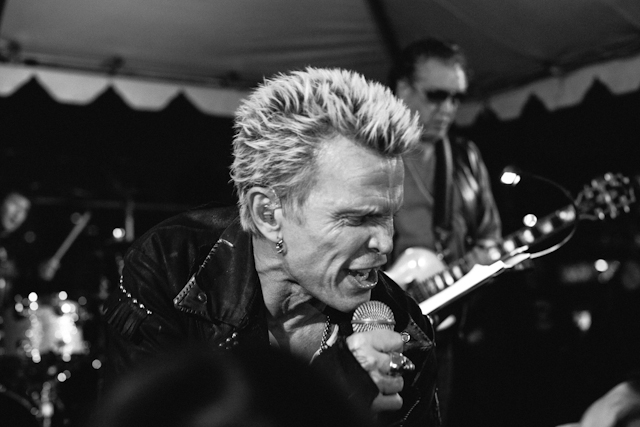
Billy Idol performing at Subliminal Projects in 2014. Image courtesy of Subliminal Projects.
Fears aside, Fairey sees that sort of enthusiasm as a sign that the gallery is striking a chord with the community. “There’s a youthful energy that’s still really important to me,” he said. “Art is the focal point in our creative ecosystem, but it’s not the only thing. Art and music and activism, all of those things are relevant to us, and we want to be a home for all of that.”
Another tense moment includes a 2003 Ryan McGinness show called “Sponsorship” that was too popular for its own good. Instead of showing art, McGinness only exhibited the logos of brands that had agreed to sponsor the show. Each company also gave out a bunch of branded merchandise, which ended up causing the problem.
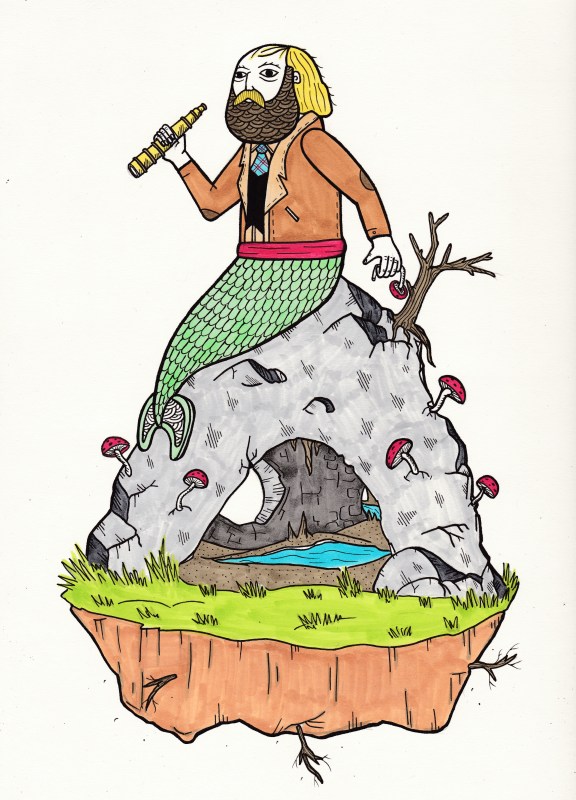
Michael Hsiung, Merman on Earth, 2016. image courtesy of Subliminal Projects.
“You can get a few people out to see paintings, but you can get a lot of people out for free product,” said Fairey, who suddenly found himself with 500 guests in a space zoned for 175. “The fire marshal came and shut us down. I already had a criminal record for all my street art stuff, so my wife took one for the team and took the blame.”
Less dramatic highlights from the gallery’s history include a show with Space Invader back in 2005, where the anonymous artist actually cemented one of his trademark mosaics on the gallery wall. “We had to leave it in our old space, because we couldn’t get it off the wall,” Fairey recalled. “Somebody got a new office space with a Space Invader in the corner.”
Compared to traditional dealers, Fairey doesn’t have the time to devote to wooing collectors, but he’s still very committed to the Subliminal program. “I think I’ve missed one opening in the history of the gallery,” he said. “I DJ at most of them!”

Space Invader and a friend at his show at Subliminal, ca. 2005. Image courtesy of Mark Hunter AKA the Cobrasnake.
That being said, he’s plenty busy with his own artwork. Next on tap is a museum-scale show called “Damaged” that he’s staging himself in Los Angeles.
“Our politics are damaged, our ways of communicating are damaged, our media—other than artnet News, of course—is damaged,” Fairey said. “We’re seeing the consequences of dysfunction. I’m working with themes of scapegoating, fear-mongering, immigration, climate complicity, conspicuous consumption… my usual laundry list.”

“Twenty-One,” installation view. Image courtesy of Subliminal Projects.
“I’m going very big for this show,” he added, promising large-scale ambitious installations. Fairey has had a number of museum shows over the years, but he’s not about to wait for the next opportunity.
“If I’m not getting the invitations, I’m going to do things on my own that I think are at a competitive scale,” Fairey said. “I’m lucky to be able to have the resources to do that.”
“Twenty-One” is on view at Subliminal Projects, Los Angeles, June 3–June 15, 2017.